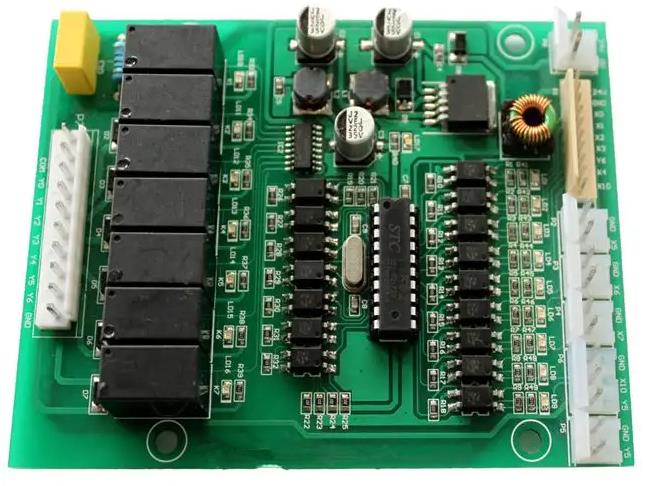At present, all countries in the world put forward lead-free requirements for printed circuit boards and its assembly. Why is lead not allowed on printed boards, PCB assembly processes and products? There are two reasons: First, lead is toxic and affects the environment; Second, the lead solder is not suitable for new assembly technology.
Lead is a toxic substance. If the human body absorbs excessive lead, it will cause poisoning. The main effects are related to four tissue systems: blood, nerves, gastrointestinal and kidney. If you are prone to anemia, dizziness, lethargy, dyskinesia, anorexia, vomiting, abdominal pain, and chronic nephritis, etc. Low dose lead intake may also have adverse effects on human intelligence, nervous system and reproductive system.

Using tin lead solder coating on PCB surface will cause harm in three aspects.
1) Lead may be exposed during processing. The lead contact processes include tin lead electroplating in pattern electroplating when tin lead layer is used as corrosion resistance, tin lead removal after corrosion, hot air leveling soldering (tin spraying), and some hot-melt soldering. Although there are ventilation and other labor protection measures in production, long-term contact will inevitably suffer.
2) Lead containing wastewater such as tin lead electroplating and lead containing gas from hot air leveling (tin spraying) have an impact on the environment. The lead containing wastewater comes from the electroplating cleaning water and the dripping or scrapped tin lead solution. In this regard, the wastewater is often considered to be low in content and difficult to treat, so it is discharged into the large pool without treatment.
3) The printed boards contain tin lead plating/coating. When such printed boards are scrapped or the electronic equipment used is scrapped, the lead containing substances on them cannot be recycled. If they are buried underground as garbage, the underground water will contain lead over the years, which will pollute the environment. In addition, lead gas exists in wave soldering, reflow soldering or manual soldering with tin lead solder in PCB assembly, which affects human body and environment, and leaves more lead content on PCB.
As a solderable and oxidation resistant coating, tin lead alloy solder is not completely suitable for high-density interconnection products at present. For example, although more than 60% of the current coating layer on the surface of printed boards in the world uses hot air to level tin and lead, when SMT is installed, some small components require that the surface of the PCB bonding plate be very flat, and non soldering methods such as wire bonding are used between the components and the PCB connecting plate, then the hot air leveling tin and lead layer appears to be not flat enough, or the hardness is not enough, or the contact resistance is too large, and other factors, non tin and lead coatings should be used.
The lead-free industrial products were first proposed by European countries. In the 1990s, laws and regulations were formed to promote lead-free industrial products. What is doing well now is Japan. By 2002, electronic products were generally lead-free, and in 2003, new products were all lead-free solders. Lead free electronic products are actively promoted in the world. The lead-free PCB can be realized completely. At present, in addition to tin lead alloy, the surface coating has been widely used, including organic protective coating (OSP), electroplating or chemical nickel/gold plating, electroplating or chemical tin dipping, electroplating or chemical silver dipping, and palladium, rhodium or platinum and other precious metals. In practical application, OSP surface coating is suitable for general consumer electronic products, with satisfactory performance and low price; Durable industrial electronic products mostly use nickel/gold coating, but the processing process is relatively complex and the cost is high; Platinum rhodium and other precious metal coatings can only be used in high-performance electronic products with special requirements, with good performance and high price. At present, chemical tin dipping or chemical silver dipping is actively promoted. With good performance and moderate cost, it is an excellent alternative to tin lead alloy coating. The production process of chemical tin dipping or chemical silver dipping is simpler than that of chemical nickel/gold dipping, with lower cost, good solderability and smooth surface, and high reliability when using lead-free soldering tin.
Lead free solder assembly has also been realized for lead-free printed boards. Tin in lead-free solders is still the main component. Generally, the content of tin is more than 90%, plus silver, copper, indium, zinc or bismuth and other metal components. These alloy solders have different compositions and different melting temperatures, and can be selected from 140 ℃ to 300 ℃. From the perspective of adaptability and cost price factors, wave soldering, reflow soldering and manual soldering have different selection temperatures and solder compositions. Solders currently used, such as 96. 5Sn/3。 5Ag、95。 5Sn/4。 0Ag/0。 5Cu and 99. 3Sn/0。 7Cu, etc., the melting point temperature is 210~230 ℃. There is only one earth in the world. We should create a good living environment for human health and future generations. The PCB industry should actively and rapidly develop towards lead-free.